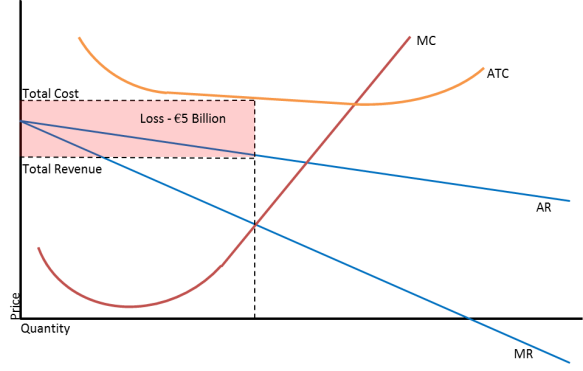A government should ultimately be bound by rules that are fixed and announced before it takes up any activity, this allows an individual to plan how they will go about their affairs, or in a more macro sense how firms should behave as they understand the manner in which government may use coercive power. Of course this system is not perfect in that the creators and administrators of these laws are fallible.
However, it does create the assurance that a pursuit of certain aims will not be stifled by a governing body, in the case where all the conditions are realised, so that law rather than stifling freedom allows it to flourish. Here Hayek makes a distinction between the rule of law which enables a government to fix conditions in which resources are used, but the ends they meet is ultimately decided by the individual, and arbitrary government where it directs the means of production to particular ends.
Central planning cannot allow the first to exist, in that the formal rules we have provide a framework rather than step by step guidance, central planning would require these rules to be exact in what they suggest in that the particular ends are met, and it is not by the individuals whim the product of these means. Here arises another problem with central planning and as such collectivism. When a government has to make every decision framework rules are useless, imagine trying to solve at this very moment how many buses should operate. Whereas in our current society the government provides the legal framework for their operation but it then comes down to competition, market forces, etc. which decides the operation of buses. A controlling government would have to make this decision under the circumstances that the problem arises, and this means that it would have to balance all the different aims and needs at that given moment as to not favour one, but inevitably somebody’s views have to be given greater significance.
Hayek uses the example of the Highway Code, which does not instruct people on where to go and exactly how they go about it (planning attempts to do this), it instead offers a framework in which the individual can operate but also ensure that society is not harmed, and is better off on the whole. It is here that the concept of formal rules is developed, in that we create rules that are useful to a yet unknown people, under circumstances which cannot be foreseen in detail. They are formed on the basis that society is better off due to their existence. Thus, this avoids the need of dealing with each individual’s means and ends, the recognition that precise results are hard to come by, and that by providing a structure of which everyone is aware of, everyone will be better off.
Micromanagement is unsuccessful as concrete rules for a given situation would have to be applied, but we lack this information, and in the ultimate end only one aim can be pursued as otherwise it may conflict with another. Thus Hayek notes that the state should confine itself to providing rules to general types of situations as only the individual currently in the current circumstance possess the correct information to make a viable decision. Also there is the recognition that we cannot see into the future, the state would struggle to see the effect of certain actions on particular people. Furthermore, the state chooses between the different ends consequently favouring one over the other, as it cannot know what would have happened if the other aimed were to be picked. Thus planning in regards to law in the creation of definite rules means that it perpetuates the problem of asymmetric information, whereas formal rules reduce the asymmetry’s influence.
Hayek emphasises that as planning becomes increasingly extensive the struggle in asserting what is “fair” or “reasonable” increases. Providing the need for more authority in making executive decisions, and that this facilitates more deliberate discrimination between the particular needs of different people. It would ultimately determine how “well-off” a certain person will be compared to another, in that only one’s needs are met through this discrimination in choice. The rule of law in a non-planned system ensures that there is an absence of legal privilege. Hayek establishes the paradox that in aiming for equality it is necessary to facilitate a legal system in which not everyone is equal in front of it.
“To produce the same result for different people it is necessary to treat them differently.”
The rule of law undeniably can lead to economic inequality (but to some extent this is the only thing that is truly inevitable), thus socialism protests against “formal justice” in that judges are too independent for example. Hayek ascertains that the rule of law is only effective if it is universal and as such does not work in socialist system, in which again there is the breakdown of political freedom. “It does not matter whether we all drive on the left or on the right-hand side of the road so long as we all do the same.” Rules are meant to enable us to predict each other’s behaviour to a needed extent, in that I won’t drive onto the motorway and find that people are driving in the opposite direction.
The individual should be able to foresee the actions of the state on the basis of the rules of law, and as a consequence use this knowledge to form his own plans and how he goes about his affairs. Here the individual knows where the state can stifle his efforts, and that it is not set arbitrarily on the specific circumstance of that moment. From this Hayek makes an acute reference to the Enlightenment:
“Man is free if he needs to obey no person but solely the laws” – Immanuel Kant
In a socialist system the rule of law will be applied in a manner which is as if a person were to be commanded by another. Legislation in a democratic government is confined by the continued discourse and disagreement, whereas in a socialist system in will be pushed through ultimately serving one individual’s ends at the cost of another.
When a state embarks on the complete control of economic life the significance of minority rights, and individual rights are diminished, without even breaking the rule of law at times. Hayek states that ruthless discrimination occurred through a change in economic policy first before and statutory change. Due to the nature of Socialism and the need for an overriding decision to be made, power lands in the hands of few and in that there is the inevitable service of their vested interests, or an ability to go against a large minority.




